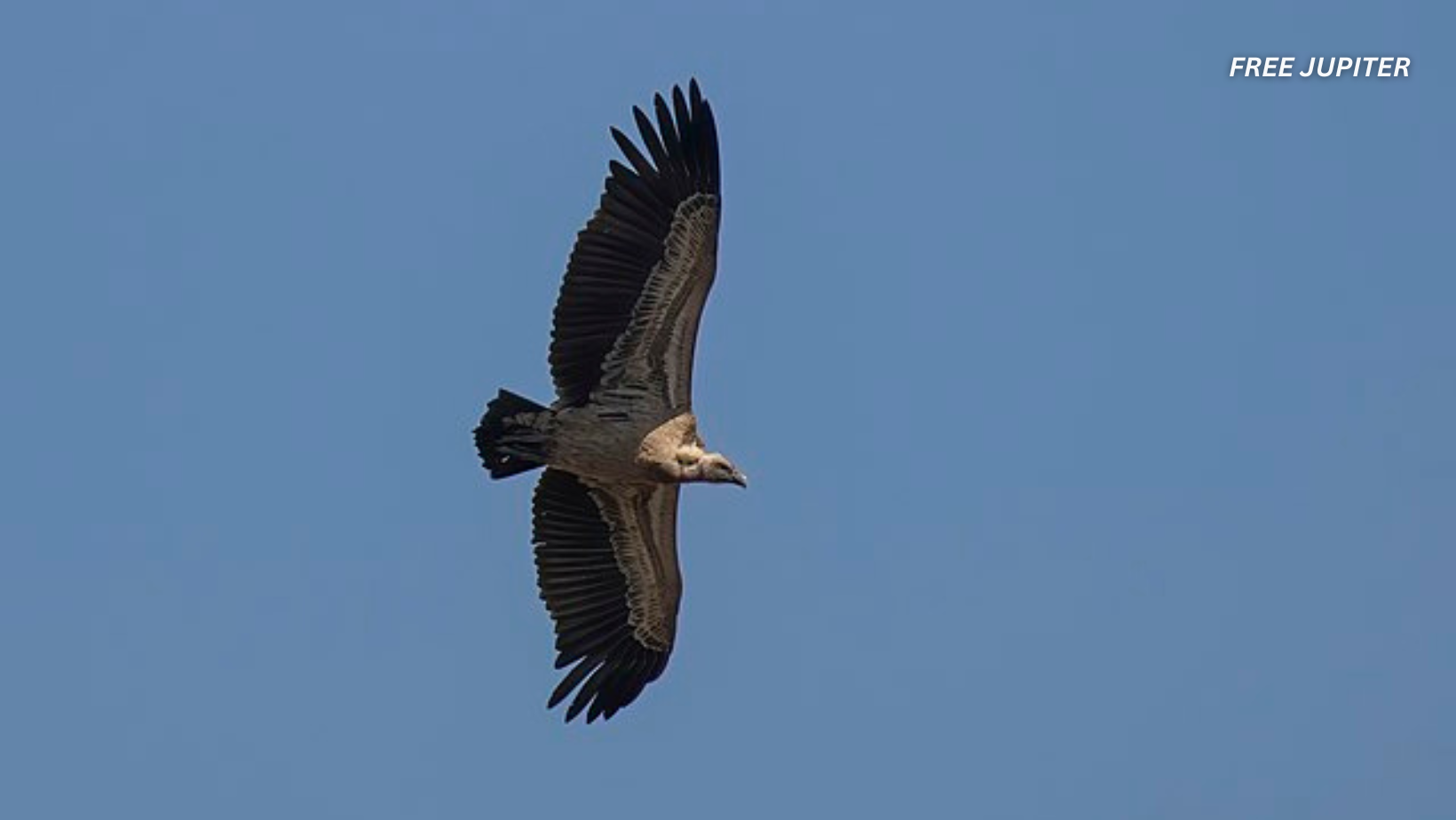Friendly Note: FreeJupiter.com shares general info for curious minds 🌟 Please fact-check all claims—and always check health matters with a professional 💙
When we think of birds, most of us imagine them gliding a few hundred feet above the ground—maybe hopping between trees or sailing above rooftops. Some species, like sparrows or pigeons, rarely stray far from the surface. And some, like the ostrich, emu, or cassowary, don’t fly at all.
These so-called flightless birds still have wings, but they serve no real aerial purpose. Scientists call these “vestigial wings”—evolutionary leftovers that once served a purpose in long-gone ancestors.
In contrast, there’s a rare club of birds that take flight to the extreme—ascending to heights that would leave most creatures breathless, literally. These are the high-flyers of the avian world, capable of reaching altitudes that rival or even surpass commercial jetliners. They don’t just rise into the sky—they own it.
But how do they manage it? Flying that high is no simple feat. The air gets thinner, the temperature plummets, and oxygen becomes scarce. For humans, these heights require oxygen tanks and pressurized airplane cabins.
Yet some birds seem to take it in stride. Let’s unpack what makes them so exceptional—and meet the species that turn the sky into their personal superhighway.
Why High-Altitude Flight Is Such a Big Deal
Before we dive into the bird hall of fame, it’s worth understanding just how challenging it is to fly at high altitudes.
The higher you go, the thinner the air becomes. This means two major problems:
- Low oxygen levels: At high altitudes, there’s less oxygen per breath. This condition, called hypoxia, makes it harder for muscles and organs to function.
- Low air pressure: There’s less lift available, which means a bird has to work harder to stay airborne unless it can find ways to glide.
On top of that, there’s the cold—temperatures can plummet to below -50°C (-58°F) at 30,000 feet. The winds are stronger, more erratic, and unforgiving.
So for a bird to not just survive, but thrive in this environment, it needs a laundry list of physical adaptations:
- More efficient lungs to pull in oxygen from thin air
- Hemoglobin-rich blood with high oxygen-binding capacity
- Powerful hearts to circulate oxygen efficiently
- Large wingspans for soaring instead of constant flapping
- Lightweight bodies to reduce energy expenditure
- Insulating feathers to stay warm in freezing temperatures
These aren’t your average backyard birds. They’re the elite pilots of the animal kingdom.
Read more: Bats Don’t Get Cancer—Here’s What Scientists Think It Means For Humans
Record-Holding High-Flyers of the Sky
Let’s meet the avian athletes that break all altitude records.
🦅 Rüppell’s Griffon Vulture – 37,000 Feet (11,300 meters)
Where they live: Central and East Africa
Why they fly so high: To scan large territories for carcasses
Fun fact: A Rüppell’s griffon once collided with a plane at cruising altitude
Holding the official record for the highest bird flight ever recorded, the Rüppell’s griffon vulture is the undisputed king of the sky. In 1973, a commercial aircraft flying at 37,000 feet over the Ivory Coast hit a bird mid-flight. The species was later confirmed to be a Rüppell’s vulture.
These vultures rely on soaring flight powered by warm rising air called thermals, which lets them cover hundreds of miles without much effort. Their blood contains a super-efficient form of hemoglobin that binds oxygen in low-oxygen environments better than nearly any other known vertebrate. They’re built to fly at oxygen-starved heights where other birds wouldn’t stand a chance.
🪶 Bar-Headed Goose – 27,000 Feet (8,200 meters)
Where they live: Central Asia and India
Why they fly so high: Seasonal migration over the Himalayas
Fun fact: They’ve been seen flying over Mount Everest
The bar-headed goose is a marvel of endurance. Every year, these birds undertake one of the toughest migrations on the planet, flying from Central Asia to the Indian subcontinent. To do so, they cross the towering Himalayas—including passes near Everest itself—at heights above 27,000 feet.
What’s their secret? Their bodies are oxygen-absorbing machines. Their lungs are hyper-efficient, and their muscle tissue is specially adapted to pull more oxygen out of every breath. Even more impressive, unlike vultures, these geese don’t coast—they flap their wings almost the entire way. Imagine sprinting a marathon uphill through a blizzard, and you get an idea of what they’re doing.
🌄 Alpine Chough – 25,000 Feet (7,620 meters)
Where they live: Mountains across Europe, North Africa, and Asia
Why they fly so high: Daily foraging and nesting in high-altitude cliffs
Fun fact: They’re known for performing aerial acrobatics in thin air
This black-and-yellow-billed bird may not make epic migrations like the goose, but it still ranks among the highest flyers. Alpine choughs are frequently spotted flitting through peaks over 25,000 feet. Their lives are spent in the clouds—nesting, feeding, and even socializing along alpine cliffs.
They have strong, curved wings that allow them to surf mountain updrafts and glide with precision. And they’re acrobatic, often seen tumbling and diving in what appears to be play. These birds are the stunt pilots of the high-altitude world.
Read more: Newly Discovered Dinosaur Species Rewrites The T. Rex Family Tree
🎺 Whooper Swan – 25,000 Feet (7,620 meters)
Where they live: Europe and Asia
Why they fly so high: Seasonal migration over long distances
Fun fact: They form classic V-shaped flying formations to conserve energy
Don’t be fooled by their elegance—whooper swans are powerhouse flyers. Weighing up to 30 pounds (13 kg), these birds fly in graceful V-formations that reduce wind resistance for the flock. Pilots have reported seeing them cruising at 25,000 feet as they travel between breeding grounds in Europe and winter homes in Asia.
Despite their size, they maintain powerful wingbeats and glide efficiently across vast distances. Their sleek bodies and collaborative flying style help make their lofty journeys possible.
🌍 Steppe Eagle – 24,000 Feet (7,315 meters)
Where they live: Steppes and plains of Central Asia
Why they fly so high: Migration and hunting
Fun fact: Their wings can span over 7 feet (2 meters)
The steppe eagle is a predator and scavenger rolled into one. With powerful wings and incredible vision, these birds ride thermals high into the sky to search for prey. Their migration routes often cross rugged mountainous terrain, where flying high becomes essential.
They are experts at energy conservation, using rising air currents to glide with minimal wing movement. That combination of power and efficiency allows them to soar to impressive altitudes during their travels.
🦴 Lammergeier (Bearded Vulture) – 24,000 Feet (7,315 meters)
Where they live: Mountains in Europe, Asia, and Africa
Why they fly so high: To drop bones from the sky and access marrow
Fun fact: Their diet consists almost entirely of bones
With a wingspan nearing 10 feet, the lammergeier is both eerie and elegant. These bearded vultures haunt remote alpine cliffs and use their extreme flight capabilities for a very specific reason—bone breaking. They’ll carry large bones high into the air and drop them onto rocks to crack them open, then swoop down to eat the marrow inside.
Their thin, elongated wings help them glide in high-altitude winds with minimal effort. Unlike most vultures, they rarely scavenge meat—they prefer bones, which provide plenty of fat and nutrients.
💃 Demoiselle Crane – 24,000 Feet (7,315 meters)
Where they live: Central Asia, northern Africa, and India
Why they fly so high: Seasonal migration over the Himalayas
Fun fact: They migrate in tight-knit family groups, often with elders leading
Don’t let the dainty name fool you—demoiselle cranes are among the hardiest travelers in the bird kingdom. These elegant creatures undertake a dangerous migration over the Himalayas every year, flying at altitudes up to 24,000 feet. They face brutal cold, unpredictable weather, and oxygen-depleted air—and they do it together.
These cranes are deeply social, flying in groups where adults guide the young. Their bond and teamwork help them survive one of the most demanding journeys any animal takes.
Read more: This Cement Can Supply Electricity For Homes. Structures May Soon Generate Their Own Energy.
Final Thoughts: The Real Top Guns of Nature
While most birds stick to modest altitudes, a rare few push the limits of biology, physics, and stamina. From vultures gliding above Africa’s savannahs to cranes conquering the Himalayas, these avian aviators have evolved extraordinary tools to survive and excel in the thin, frigid air of Earth’s upper atmosphere.
In doing so, they’ve turned high-altitude flight into something beyond survival—it’s a demonstration of just how far evolution can go when the sky’s the limit.










